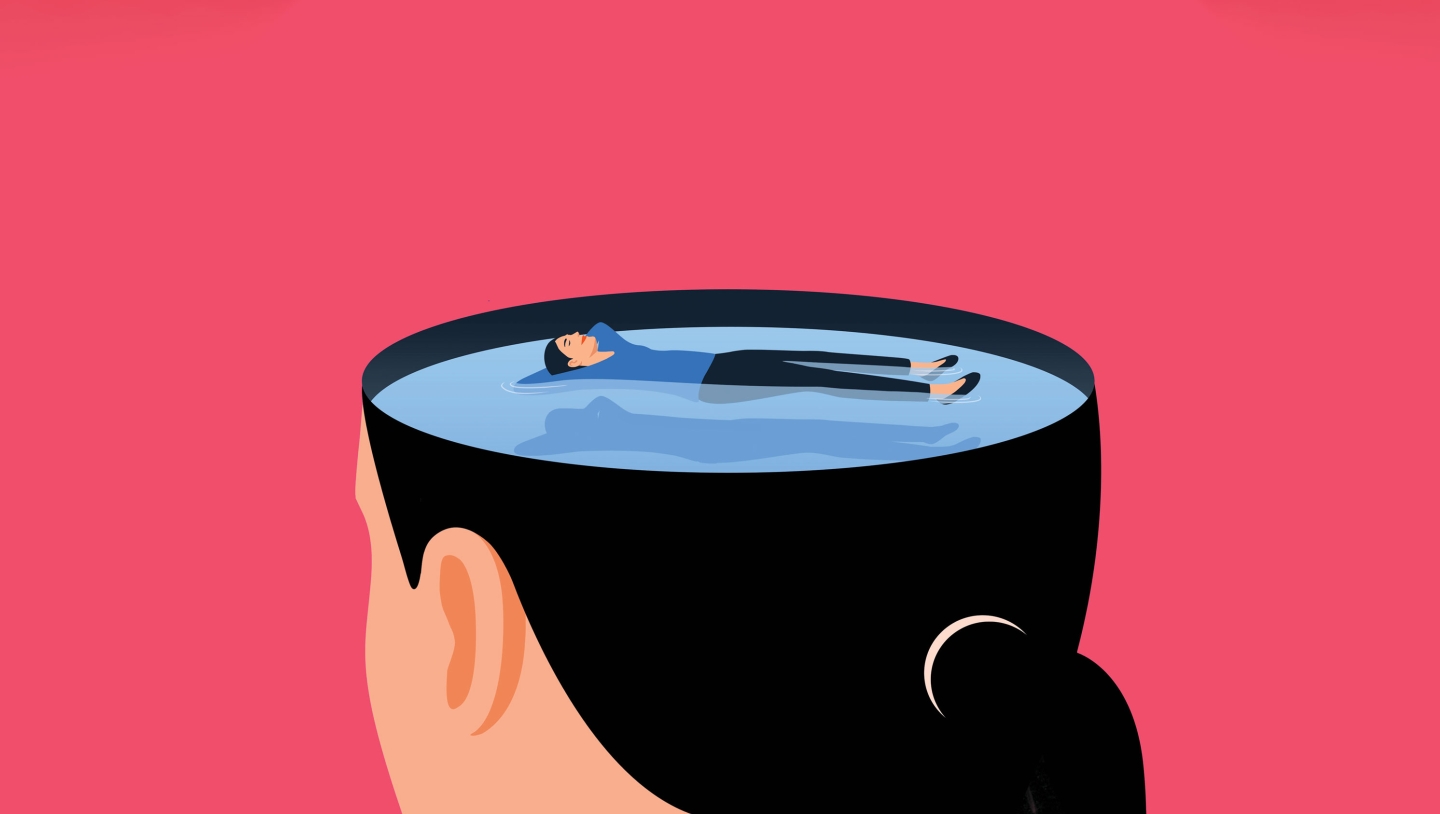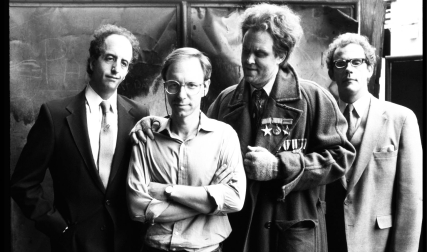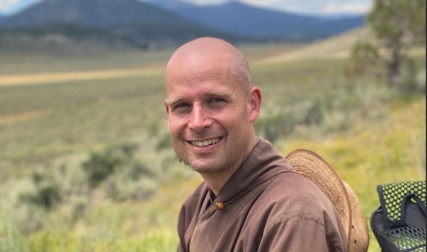We are all thrust into this stream of human history, and we find ourselves in the present moment. But because of a lack of awareness, most of us go about our daily lives on a kind of autopilot, unaware of the deep suffering and happiness within and around us. I learned so much wisdom as a monk when I trained under Zen Master Thich Nhat Hanh, whom we call “teacher” or “Thay.” As he often said, committing to a practice of mindfulness every day means we want to wake up to life. We want to make an appointment with our own life.
It’s important to know why we practice mindfulness: to continually remember that we have this precious, wondrous experience of being alive. Mindfulness helps us to deeply appreciate the incredible phenomenon of life and all of what’s going on inside of us and around us right now, in the present moment. It’s important not to think of mindfulness as just a tool but also as a source of happiness and freedom.
The question: How do we accomplish this?
1. Start with Your Breath
Many traditions start with the breath because it’s always there. In the history of the universe, if you are alive in this miracle of the present moment, then you are breathing. No matter what you are doing, you can become aware of your breathing in and breathing out. When you focus on your breath, you deprive your thoughts of a critical ingredient: attention. Mindfulness cultivates what we call “appropriate attention.” Instead of being distracted by anxious thoughts and feelings of regret or fear or greed, anger or ambition or jealousy, or simply being carried away by the wash of modern entertainment, we can direct our attention, change what we think about, and be more aware and fully alive at the same moment.
2. Pay Attention to Your Body
Mindfulness involves retraining yourself to become aware of the conditions that give rise to happiness and pleasure in daily life. Pay attention to the sensation of your body sitting on the firm surface of a chair. Feel the clothes on your body. Smell the air around you. We often take these neutral sensations for granted. When we have a bad toothache, all we want to do is go to the dentist as quickly as possible and get the tooth extracted or somehow make the pain go away. We’re so relieved—even happy—when the pain is gone. But we don’t appreciate all the moments when we don’t have a toothache. Being mindful helps turn that neutral sensation of not having a toothache into a pleasurable sensation.
I ran cross country at Dartmouth but injured myself by pushing too hard. I had to quit, and for a time I was depressed about what I couldn’t keep doing. Now, I think it’s a wonder that I have two legs that allow me to walk. That’s a reason for happiness. Or think about this: Not all of us are able to see. But if we have eyes that can see—even one eye—we can nourish joy just from that condition. How lucky we are to see the blue sky or the face of a child. Mindfulness helps us appreciate the conditions of happiness that are already there.
3. Slow Down
I always felt that something missing in my Dartmouth experience was the encouragement to slow down and be aware of the preciousness of my life. I learned that speed—being busy, constantly striving—is a feature of American culture. If you make a habit of slowing down and stopping, you’ll see what you are doing more clearly. You may ask yourself questions. Are you running to avoid something? Is there pain or suffering that you don’t want to face?
The key practice that brought me into this stream of mindfulness training was recognizing that many of us who go to high-powered institutions such as Dartmouth are running as fast as possible to be as effective as possible, to be as intelligent as possible, to be at the top in whatever we do. I wanted to step off the treadmill.
When former College President Jim Yong Kim became head of the World Bank, I reached out to him, and he invited Thay, my teacher, and our Plum Village community (the Buddhist monastery in France where I trained and was ordained) to train his staff at their headquarters in Washington, D.C. We spoke to them about being more mindful of simple, human existence and less preoccupied with power and politics. “Do you want to be No. 1, or do you want to be happy?” was one of the first questions Thay posed to these accomplished people. It’s a profound question.
When I visited Hanover last spring with other monastics, a student mentioned that she thought undergrads feel they must make the most of every second, and that there’s this pressure to take advantage of so many amazing opportunities and resources. She thinks that might be why so many classmates feel so much stress. They don’t slow down enough to care for themselves. When she led a first-year paddling trip on the Connecticut River, she had her trippees pull out their canoes near a beautiful green field in Vermont before paddling back to campus. She told them not to be in a hurry to get into the swing of the fall term’s routine. She told them to enjoy the moment. I would like to have heard that when I was a student.
4. Learn to Walk
“Walk as if you are kissing the earth with your feet,” Thay said. One practice I was given as a novice in the Plum Village monastery was to pick two trees and walk very slowly between them each day and naturally coordinate my breaths with my steps—perhaps one step for the in-breath and one for the out-breath, or maybe three steps for each in-breath and four steps for each out-breath—breathing in and out through my nose. I was to imagine that the only time I had left on earth was the time of walking between those two points. How would I walk? How would I appreciate every step and every breath? That is how I trained myself to walk.
It’s not the coffee that brings the relief. It’s your mindful step.
You don’t need two trees or even a beautiful natural place to practice this. If you drive to a supermarket, park your car far away and then enjoy your steps. You know that you’re soon going to be surrounded by vast wealth and food. From the moment you step out of the car, walk as if each step were gently greeting the ground and then saying goodbye to it. Breathe in the rhythm of your steps and appreciate each moment. If you work in an office and notice stress building up, walk mindfully from your desk to the water cooler or coffeemaker, and enjoy every step in mindfulness. Nobody will notice that you are practicing. It’s not the coffee that brings the relief. It’s your mindful step.
5. Feed Your Body and Mind
Eating in mindful silence for even five or 10 minutes can change your relationship with food. It can transform your health and sense of well-being. At Deer Park, the monastery where I reside, when we eat together we always begin eating in silence, and we eat very slowly. That allows us to be mindful of each morsel of our food, of the flavor and sweetness and texture of the carrot, the softness of the rice. Mindful that the food is made of the sun and the rain and the earth and the right temperatures, that a farmer planted and harvested it, that a cook prepared it for our table.
It’s a valuable practice to focus while eating, because our mind tends to wander even as the body experiences physical sensations from the food. If our mind is elsewhere—we’re deep in conversation, reading the newspaper, watching a video, thinking about a project we’re working on—we’re having this emotional sensation from the food but we’re misattributing the source of the emotion. This cross-wiring creates confusion in our bodies, the opposite of calmness and awareness.
Even deeper mindfulness is being aware of why we are eating, of cause and effect, of larger relationships, our physical needs, remembering that millions of children around the world do not have enough to eat, that eating too much creates unpleasant feelings in our stomach, that wasting food contributes to the climate emergency. If we look at the leftover food on our plate and think of it multiplied by millions, it’s easy to imagine the inputs and chemicals and energy that have needlessly contributed to the carbon dioxide going into the atmosphere and destroying our planet’s biodiversity.
6. Wake Up and Smile
Being mindful about good sleep means preparing the mind for good sleep. In the evening here, we have something we call “noble silence”—a time for quieting our speaking and quieting our thinking. It’s important to wind the mind down before going to bed. Remove distracting devices from your sleeping space. A 15- to 20-minute walking or sitting meditation before bed can do wonders.
Starting each day mindfully can be as simple as becoming aware of your breathing and your surroundings, then sitting on the edge of your bed and taking five or 10 seconds to say quietly to yourself, Waking up this morning, I smile. Twenty-four brand new hours are before me. I vow to live each moment in mindfulness and to look at all beings with eyes of compassion. This is a poem that, in our monastic training, we recite to ourselves daily when we wake up and put our feet on the floor. You can come up with your own poem or meaningful lines.
The practice of smiling is interesting. Thay often said our happiness can be the source of our smile, but our smile can also be the source of our happiness. Even a half-smile is enough to relax the muscles in our face. It nourishes joy.
It’s a wonderful practice to wake up every morning and look at your loved one, whether a child or a partner, and see them with new eyes. Look at your loved one in silence and smile, just for the sake of smiling.
7. Minimize Distractions
I’ve learned that I do my deepest work when I do one thing at a time. It takes practice to avoid distractions. I find it important to create spaces where I’m not easily tempted or contacted. There are dedicated times in the day, for instance, when I have access to a laptop and a cell phone. And then I put them to sleep—far away from where I rest and from those spaces where I want to look inward. I know that I’m a human being and that I’m easily distractible. Our digital devices are deceptively alluring now that they’ve become commonplace in our daily life. The content creators know very well what the human mind likes and dislikes, and how to make it crave more. As a monk who practices meditation every day, I need to protect the spaces where I cannot be contacted.
8. Build Stop Lights into Your Routine
Make a habit of regularly pausing what you’re doing to get re-centered. In our office at Deer Park, a soft bell chimes every 15 minutes to remind us to return to our breathing and ourselves. Stopping what you’re doing, even for just five seconds, can be life changing. Thay noticed that most people drive cars only in anticipation of reaching their destination. Therefore, when they encounter a red light, they are impatient or frustrated, regarding the red light as a kind of enemy preventing them from attaining their goal. But we can also see the red light as a bell of mindfulness, reminding us to return to the present moment. The next time you see a red light, smile at it, and think about your breathing. “Breathing in, I calm my body. Breathing out, I smile.” It is easy to transform a feeling of irritation into a feeling of thankfulness for the chance to return to the present. It’s still a traffic light, but in this sense it becomes more.
9. Cultivate Gratitude
Some of the monks from Deer Park couldn’t stop appreciating the beauty of the trees on Dartmouth’s campus during our 2023 visit. “I am so grateful for the College’s arborists for allowing these trees to grow,” said one. Mindfulness makes everything we do in life precious. Notice how lucky you are to be alive. Cultivate gratitude for the conditions that have made your life and your environment possible: the parts of your ancestors that live on in you, the builders and gardeners and artists and teachers, the preciousness of libraries.
10. Focus on Right Here, Right Now
Mindfulness invites a mentality that says, “I’m not going to sacrifice the present moment for some imagined future.” By living mindfully in the way you breathe and the way you eat and the way you walk, in the way you work, the way you look at a loved one, the way you see your surroundings, the way you notice how things are connected, you’re actually creating the best conditions for our planet and our future generations.




